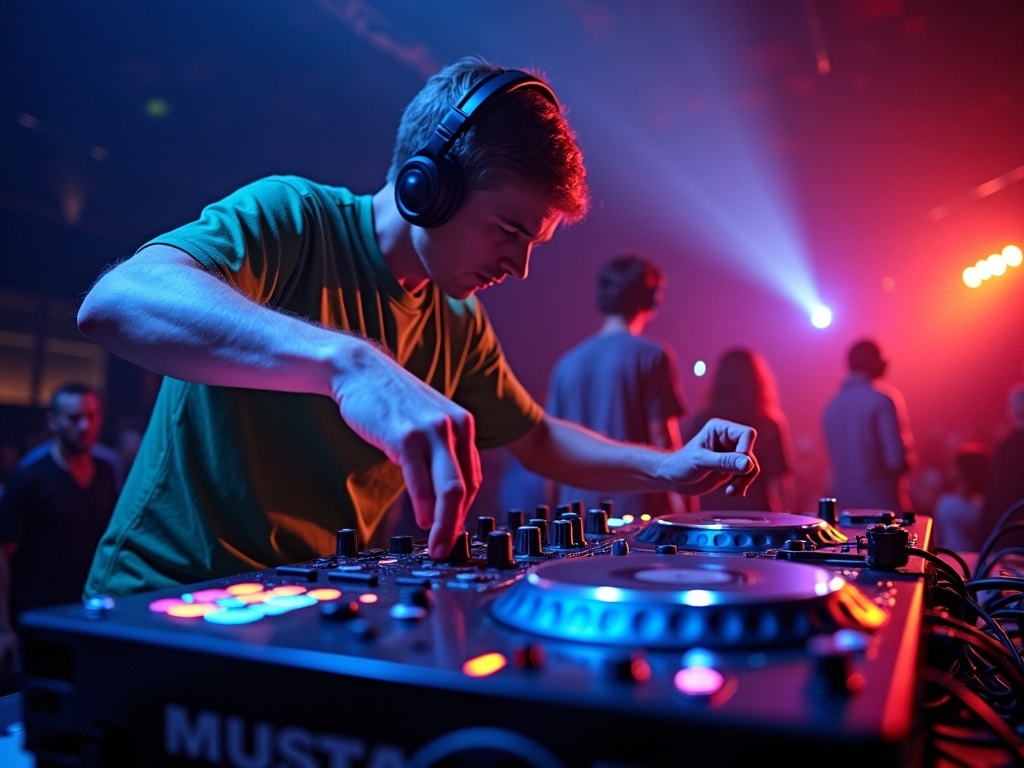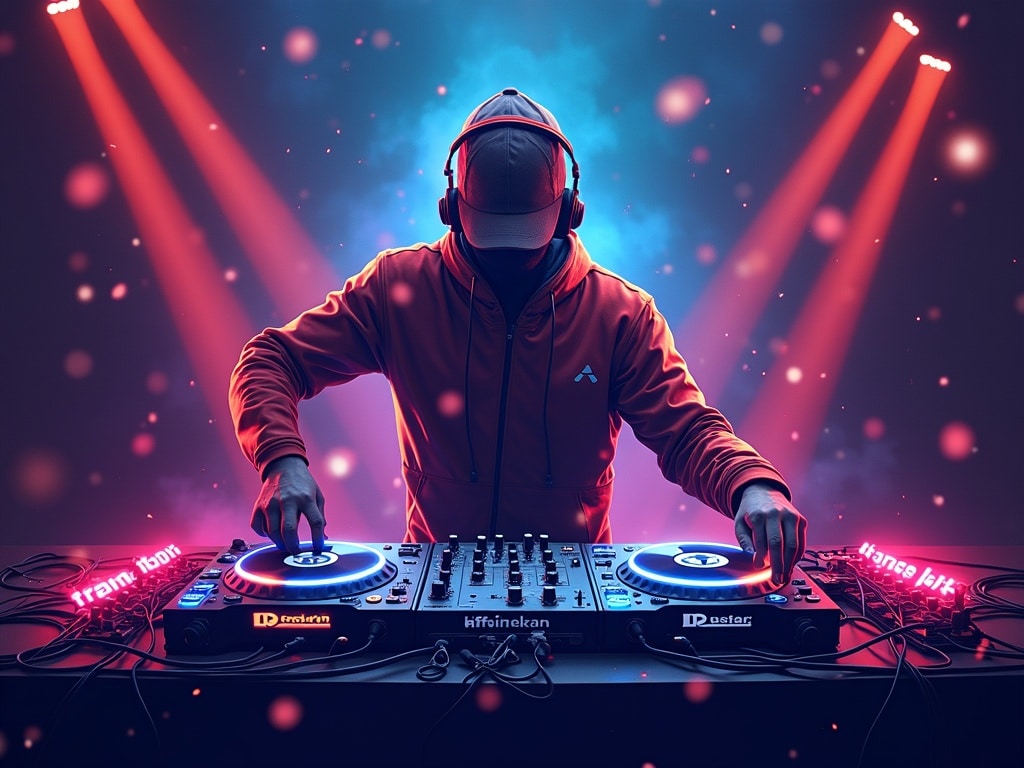From Zero to DJ Hero: Easy Tricks for Instant Crowd Control
Ever dreamed of commanding a dance floor, seamlessly weaving between tracks, and sending energy levels soaring? You might think becoming a DJ hero is a far-off fantasy, requiring years of intense training and a natural-born musical genius. Think again! With the right DJ tips and tricks, you can go from zero to spinning tunes and captivating crowds faster than you imagine. This guide breaks down the essentials, offering simple, actionable steps to get you mixing like a pro in no time. Whether you're 10 or 75, the world of DJing is open to you. Let's dive in and unlock your inner DJ!
Understanding Your DJ Equipment: What Does Each Button Do?
Before you drop your first beat, knowing your gear is crucial. Don't be intimidated by the knobs and sliders! Most DJ setups include:
- Decks (Turntables or CDJs/Media Players): These are your music sources. Turntables play vinyl records, while CDJs or media players play digital music files (MP3s, WAVs, etc.) from USB drives, CDs, or SD cards.
- Mixer: The heart of your setup. The mixer blends the audio from your decks. Key features include:
- Volume Faders: Control the volume of each deck.
- EQ Knobs (High, Mid, Low): Adjust the frequencies in each channel to shape the sound.
- Crossfader: Smoothly transitions between the left and right channels (decks).
- Cue Buttons/Headphone Output: Allows you to listen to a track privately before playing it to the audience.
- Gain/Trim Knobs: Adjust the input level of each channel.
- Headphones: Essential for cueing tracks and beatmatching.
- Speakers/Amplifier: To blast your music to the crowd!
Actionable Tip: Spend an hour just exploring your equipment. Turn knobs, move sliders, and listen to how each control affects the sound. This hands-on familiarity is invaluable.
Song Selection Strategy: How Do I Choose the Right Tracks?
A DJ is only as good as their music library. Building a killer collection takes time, but here's how to get started:
- Know Your Audience (Even if it's your bedroom!): What kind of music do they enjoy? What's the vibe you're going for? Are you rocking a house party, a wedding, or a chill lounge?
- Variety is Key: Mix genres, tempos, and energy levels to keep things interesting. Don't be afraid to experiment!
- Build Playlists: Organize your tracks into playlists based on genre, mood, or event. This will save you time and stress when you're DJing live.
- Stay Current: Keep up with the latest hits and trends, but also explore classic tracks that stand the test of time.
Actionable Tip: Create a go-to playlist of 20-30 tracks that you know will always get a good reaction. This is your safety net when you need to get the party going.
Beatmatching Basics: How to Blend Two Songs Seamlessly?
Beatmatching is the art of aligning the tempos (beats per minute, or BPM) of two songs so they play in sync. This is what allows you to transition smoothly between tracks without a jarring change in rhythm.
- Identify the BPM: Most DJ software displays the BPM of each track. You can also use online tools or your ears to estimate the BPM.
- Adjust the Tempo: Use the pitch fader on your deck to adjust the tempo of the incoming track to match the tempo of the currently playing track.
- Listen Closely: Use your headphones to listen to both tracks simultaneously. You'll hear if they're drifting out of sync.
- Nudge the Jog Wheel: If the beats are slightly off, use the jog wheel (the platter on the deck) to nudge the incoming track forward or backward until the beats are perfectly aligned.
Actionable Tip: Practice beatmatching with two simple, similar songs. Focus on getting the beats locked in perfectly before attempting more complex transitions.
Effective Cueing Techniques: How to Start Songs at the Perfect Moment?
Cueing is the process of finding the perfect starting point (the cue point) for a song. This allows you to seamlessly introduce a track without any awkward silences or mistimed starts.
- Use Your Headphones: The headphone output on your mixer is your best friend. Use it to listen to the incoming track privately.
- Find the First Beat: Look for the first strong beat of the song, often the kick drum.
- Set Your Cue Point: Use the cue button on your deck to set the starting point.
- Practice Your Timing: Practice releasing the cue button at the precise moment the beat drops, so the song starts in perfect sync with the music that's already playing.
Actionable Tip: Experiment with different cue points. Sometimes starting a song slightly before the first beat can create a more interesting and energetic transition.
Mixing Techniques for Beginners: Simple Transitions to Keep the Energy Flowing
Now that you know the basics, it's time to start mixing! Here are a few beginner-friendly techniques:
- The Simple Fade: Gradually fade out the outgoing track while fading in the incoming track using the volume faders. This is the most basic transition but can be very effective.
- The Crossfade: Use the crossfader to smoothly transition between tracks. Start with the crossfader all the way to one side, then slowly move it to the other side to blend the tracks.
- Cutting: Quickly switch between tracks using the crossfader. This creates a more abrupt and energetic transition.
- EQ Blending: Use the EQ knobs to gradually introduce the frequencies of the incoming track while removing the corresponding frequencies from the outgoing track. For example, bring in the bass of the new track while taking out the bass of the old track.
Actionable Tip: Record yourself practicing these transitions. Listen back and identify areas for improvement. Experiment with different techniques to find what works best for you.

Reading the Crowd: How Do I Know What Music They Want to Hear?
Being a DJ isn't just about technical skill; it's about connecting with your audience. Here’s how to gauge the crowd's mood and musical preferences:
- Observe Their Reactions: Are they dancing and smiling? Or are they standing still with blank expressions?
- Pay Attention to Requests: Consider playing requests, but don't be afraid to politely decline if a request doesn't fit the vibe.
- Watch Their Body Language: Are they energized and engaged? Or are they looking bored and restless?
- Experiment and Adapt: Don't be afraid to try new things and see how the crowd reacts. If something isn't working, switch it up!
Actionable Tip: Before your gig, talk to the event organizer or someone who knows the audience well. Get their insights on what kind of music they're likely to enjoy.
Building a DJ Set: Creating a Dynamic and Engaging Musical Journey
A great DJ set is more than just a random collection of songs. It's a carefully curated musical journey that takes the audience on a ride. Here's how to build one:
- Start with an Opener: Choose a track that's upbeat and inviting to set the tone for the night.
- Build the Energy: Gradually increase the tempo and intensity of the music as the night progresses.
- Create Peaks and Valleys: Don't keep the energy at the same level all night. Introduce moments of calm and relaxation to create contrast and build anticipation.
- End with a Bang (or a Chill Vibe): Choose a closing track that leaves the audience feeling satisfied and energized (or relaxed, depending on the event).
- Plan Your Transitions: Think about how you'll transition between each track to create a seamless and cohesive flow.
Actionable Tip: Create a detailed playlist with notes on how you plan to transition between each track. This will help you stay organized and focused during your set.
Essential DJ Software and Tools: What Software Should I Use?
DJ software has revolutionized the industry, offering powerful tools for mixing, beatmatching, and organizing your music library. Here are a few popular options:
- Serato DJ Pro/Lite: Industry-standard software known for its stability, performance, and user-friendly interface.
- Rekordbox DJ: Pioneer DJ's software, seamlessly integrates with their hardware.
- Traktor Pro: Powerful software with advanced features for creative DJing.
- VirtualDJ: Versatile software with a wide range of features and a free version for beginners.
Actionable Tip: Download trial versions of different DJ software programs and experiment to find the one that best suits your needs and workflow. Many offer free versions to start with.
Common DJ Mistakes to Avoid: What Pitfalls Should I Look Out For?
Even the best DJs make mistakes, but avoiding these common pitfalls will help you stay on track:
- Playing the Same Genre All Night: Keep things interesting by mixing it up.
- Ignoring the Crowd: Pay attention to their reactions and adjust your music accordingly.
- Bad Beatmatching: Practice your beatmatching skills until they're second nature.
- Awkward Transitions: Plan your transitions carefully to create a seamless flow.
- Being Unprepared: Always have a backup plan in case something goes wrong.
- Overdoing Effects: Use effects sparingly and tastefully.
Actionable Tip: Record your sets and listen back critically. Identify areas where you can improve and focus on those areas in your next practice session.
Practicing and Improving Your Skills: How Do I Get Better at DJing?
Like any skill, DJing requires practice to master. Here are some tips for improving your skills:
- Practice Regularly: Even just 30 minutes a day can make a big difference.
- Record Your Sets: Listen back and identify areas for improvement.
- Watch Tutorials: There are tons of great DJ tutorials online.
- Seek Feedback: Ask other DJs for constructive criticism.
- Experiment with New Techniques: Don't be afraid to try new things and push your boundaries.
- Listen to Other DJs: Pay attention to how professional DJs build their sets, transition between tracks, and engage with the crowd.
Actionable Tip: Set realistic goals for yourself. Start with the basics and gradually work your way up to more advanced techniques. Celebrate your progress along the way!
So, there you have it! Your roadmap to rocking any crowd, from living room practice to center stage. These DJ tips and tricks are your launching pad. Remember, every DJ starts somewhere. Embrace the learning process, don't be afraid to experiment, and most importantly, have fun! The journey from zero to DJ hero is an exciting one. Now go out there and make some noise!

